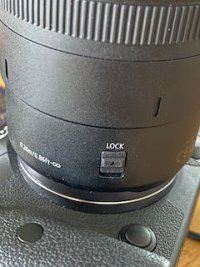The advantage is for wet lenses which are growing in number. Being able to add a wet lens increases the versatility of an underwater camera system. I have not tried a mismatch (not following a maker's recommendation) so see how far off one can be - an expensive experiment unless one already has the parts to work with as well as the time.I have a 8" dome from my 16-35mm and 8-15mm and macro flat port for my 100mm macro. I am trying to understand your previous comment
"What I found interesting is potentially zero front lens element movement during focusing as this is implied in the posted pix unless there was an error as the SA ring appears to have moved. This is important for underwater photography since it is advantageous to have a fixed relationship between the front lens element and lens port (which is typically of the flat variety for a 100mm lens) as the lens port (part of the underwater housing) becomes part of the optical system. "
Why is it advantageous to have a fixed relationship between front element and lens port? The flat port won't become part of the optical system unless it is a lens or when a wet lens is added in front on the flat port.
I was shooting with a dome port combined with a macro lens a couple days ago but it was one of my Nikon systems not not one of my Canons. I did a bunch of testing a few years ago to see how much port extension to use - one needs the right amount as you already know from experience with the 8-15 and 16-35.
Upvote
0

